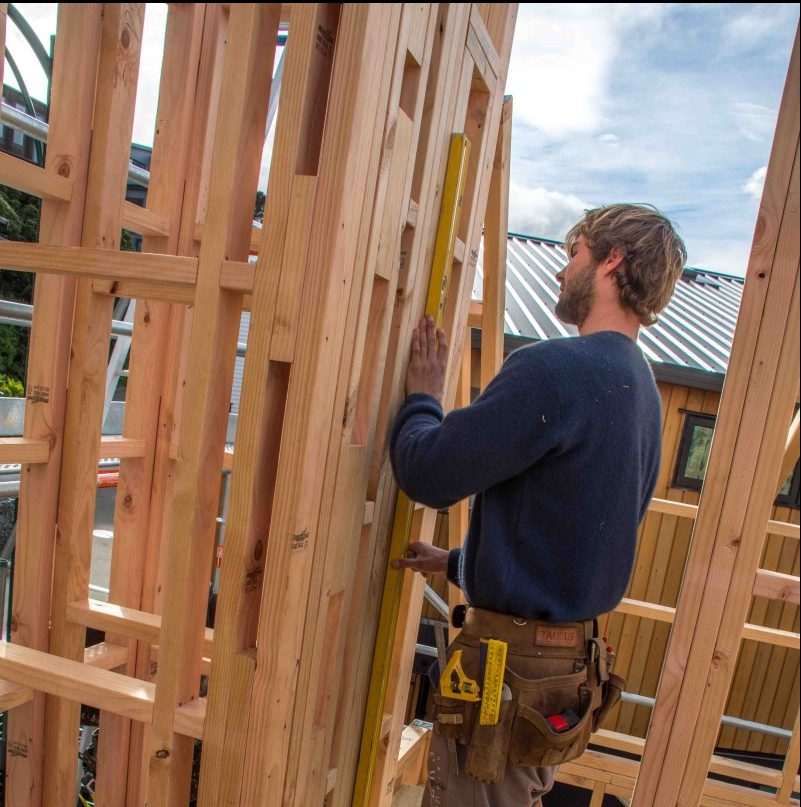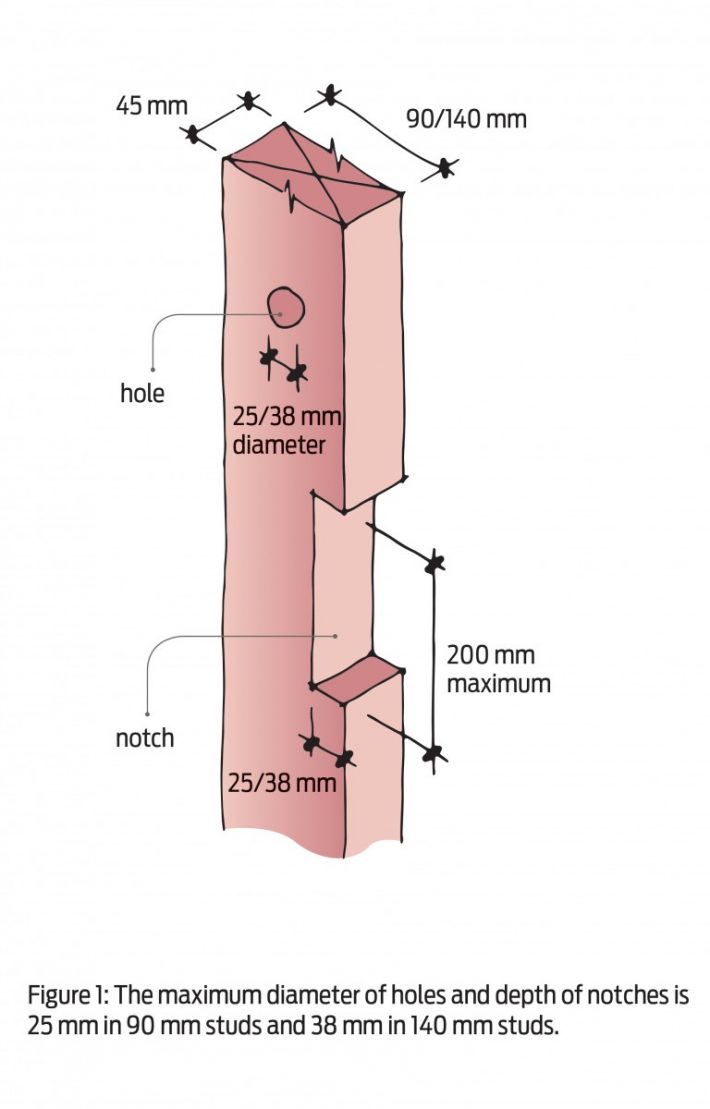Helpful timber-framing and foundation pointers
23 May 2018, LBP & Regulation, Prove Your Know How, Technical

This article highlights two issues found in timber-framed building work that are common in complaints about LBPs to the Building Practitioners Board and in enquiries to MBIE’s technical team
The following two issues arise in a number of complaints:
- Holes and notches to studs and joists.
- Foundation set-out
Handy reference guide to NZS 3604:2011
These issues relate to NZS 3604:2011 Timber-framed Buildings.
This Standard is a core compliance document for those involved in building work. A helpful reference guide containing selected extracts from this Standard is also available: SNZ HB 3604:2011 Timber-framed Buildings Handbook (the Handbook).
This Handbook provides users with a collection of figures and tables extracted from NZS 3604:2011 that are commonly used on-site or in the design office. SNZ HB 3604:2011 has been designed as an ‘on-site reference guide’ and should prove a useful resource for those who don’t have ready access to the full version of standard.
MBIE has sponsored the handbook, so it is now free to download from the Standards New Zealand website.
Holes and notches to studs and joists
Achieving greater levels of energy efficiency in our homes has become more important. As a result, some common methods of construction have changed or been modified.
An example of this is the move from 90x45mm to 140x45mm timber wall framing in order to provide enough depth for thicker wall insulation.
Important note: NZS 3604:2011 (and the Handbook) provides notching and drilling limits for 90mm-deep wall framing. However, it does not give limits for 140mm-deep wall framing.
- The limit for 90mm framing is that the maximum size of the hole or notch can be no more than 25mm, or 27% of the width of the stud.
- Although not covered by NZS 3604:2011, for 140mm framing the maximum size of a hole or notch would be 38mm (27% of 140mm).
You will note the 140mm wall depth can offer additional opportunities for the size and position of services that plumbers and electricians can run through holes in the framing.
References to checking and boring in studs can be found in section 1.5.3 of the Handbook and in section 8.5.1.6 of NZS 3604:2011.
Remember, if you want to drill bigger holes in studs (or floor joists), refer to the full text in the Standard or make use of one of the proprietary supports available on the market to accommodate the larger diameter hole. Always drill in the centre of the stud.
Foundation set-out
A number of recent Building Practitioner Board complaints have considered issues relating to foundation set-out, siting or accuracy of layout of a house slab. The most common area of concern for foundation-related complaints is when the foundation set-out is found to be inconsistent with the consented drawings.
Modern methods of construction often involve foundation specialists laying the foundations and then the carpenter starting work after the slab is formed. This is an example of the move to greater levels of specialisation to help drive efficiency into the building process. However, it is important that clear communication is not lost in this process.
To be clear and avoid any doubt, always work to the consented set of drawings and, if there are differences within the working drawings or between the drawings and the work that’s been completed by a contractor, these should be raised and resolved with the designer, project lead and the building consent authority before work progresses.
A few common problems to watch out for include:
- The foundation layout plan not being consistent with the wall framing assembly or other aspects of the consented drawings.
- The layout provided by the truss and frame manufacturer not aligning with foundation design. This often leads to frames overhanging or falling short of the slab.
- The finished foundation not meeting the dimensional tolerances required by NZS 3604:2011. This means the slab and wall framing will probably not line up with each other. Refer to section 1.3 of the Handbook or section 2.2 of NZS 3604:2011.
- Complex, angular, stepped, or irregular foundation layouts, for which set-out is more difficult and problems are more common.
- Tight or infill sites, which often have additional requirements with boundary clearances, building adjacent to easements, and the like, meaning that accurate set-out is even more important.
Find the standard and the handbook
NZS 3604:2011 timber-framed buildings can be purchased on the Standards New Zealand website. SNZ HB 3604:2011 Timber-framed buildings Handbook is free to download from the Standards New Zealand website. It has been designed as an ‘on-site reference guide’ and provides users with a collection of figures and tables extracted from NZS 3604:2011 that are commonly used on-site or in the design.
This article first appeared in Codewords – Issue 83
This article first appeared in Codewords – Issue 83
Register to earn LBP Points Sign in
2 Comments
Leave a Reply
You must be logged in to post a comment.





consent
helpful